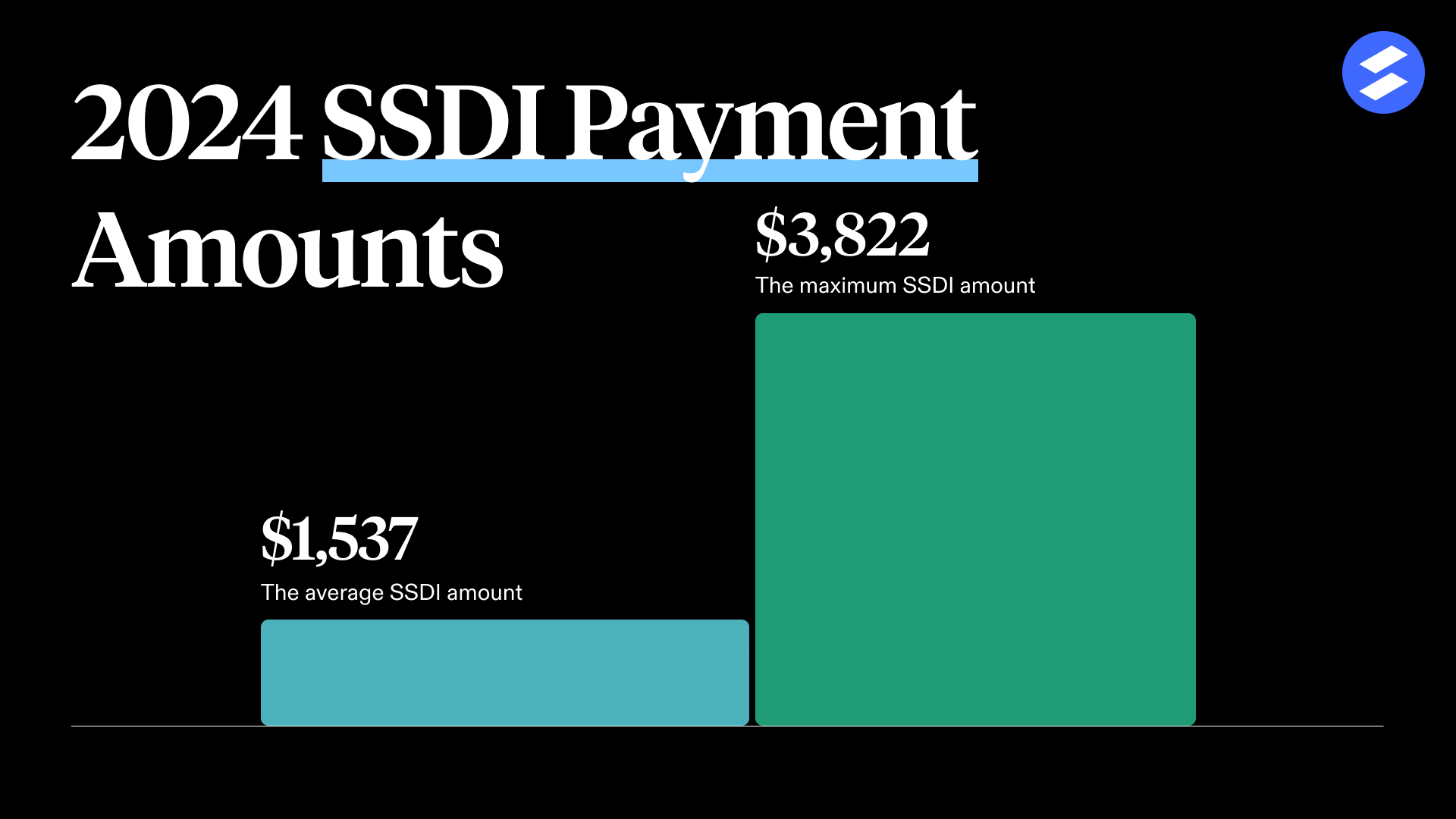Is Myasthenia Gravis a Disability? How to Qualify for Benefits

Atticus offers free, high-quality disability advice for Americans who can't work. Our team of Stanford and Harvard-trained lawyers has a combined 15+ years of legal experience and has helped over 50,000 Americans apply for disability benefits.
If you have myasthenia gravis, you may qualify for Social Security disability benefits if you are unable to work due to your condition. Nearly 10% of all disability benefits recipients qualify due to diseases of the nervous system and sense organs, which is how the Social Security Administration (SSA) categorizes this autoimmune condition.
Qualifying for disability benefits is a complex process. We'll guide you through the SSA’s eligibility criteria to qualify with myasthenia gravis and the steps in the disability benefits application process.
What is myasthenia gravis?
Myasthenia gravis is a neuromuscular condition that impacts the communication between the nerves and muscles. This chronic autoimmune disorder weakens the body's voluntary muscles — namely those controlling the limbs, eyes, mouth, and throat — due to antibodies disrupting communication between the nerves and muscles.
Myasthenia gravis is a disability, and the Social Security Administration lists the neurological condition in the Blue Book, a list of qualifying conditions for disability benefits.
2 main types of myasthenia gravis
There are two types of autoimmune myasthenia gravis, wherein specific antibodies cause the condition. These are:
Ocular myasthenia gravis: With this type of myasthenia gravis, the muscles that move the eyes and eyelids become weak, leading to droopy eyelids or difficulty keeping the eyes open. Ocular myasthenia gravis can become generalized myasthenia gravis.
Generalized myasthenia gravis: With generalized myasthenia gravis, the eye muscles, as well as the muscles in the face, neck, arms, legs, and throat, are impacted by muscle weakness. These symptoms can lead to difficulty walking long distances, standing up, and speaking or swallowing.
Is myasthenia gravis a disability?
Yes, myasthenia gravis is a disability. The SSA lists myasthenia gravis under neurological disorders (Section 11.12) in the SSA Blue Book. You may qualify for benefits with myasthenia gravis if your condition prevents you from working.
The Americans with Disability Act (ADA) also considers myasthenia gravis a disability if it is substantially limiting. This law, passed in 1990, prohibits discrimination against individuals with disabilities.
Common myasthenia gravis symptoms
People with myasthenia gravis can have the following symptoms:
Muscle weakness or fatigue
Vision problems, including eyelid drooping and blurred or double vision
Difficulty swallowing or chewing
Issues with speaking
Shortness of breath
Changes in facial expression
Can you get disability for myasthenia gravis?
Yes, myasthenia gravis may qualify you for disability benefits if it is severe enough that you can no longer work due to your condition. Qualifying for Social Security disability becomes easier if you apply with more than one qualifying condition. For instance, individuals with myasthenia gravis are more likely also to have other autoimmune conditions, such as lupus, rheumatoid arthritis, or thyroid disease.
To learn more about these conditions and others that qualify, review our main guide on conditions that are eligible for disability.
Criteria for getting disability with myasthenia gravis
To get disability benefits with myasthenia gravis, you will need to meet SSA criteria. Namely, you must demonstrate through medical records and supporting documentation that you cannot work because of your myasthenia gravis.
According to the SSA Blue Book, to qualify for disability with myasthenia gravis, your condition must be characterized by one of the following symptoms or effects, which must persist for a minimum of three months despite receiving treatment. Treatments may include medication or other procedures prescribed by a physician.
Disorganization of motor function in the arms and legs that extremely limits your ability to stand up when seated, maintain your balance while walking or standing, or use your arms.
Bulbar and neuromuscular dysfunction that has led to one of the following:
A myasthenic crisis that requires mechanical ventilation
The need for either supplemental enteral nutrition through a gastrostomy or parenteral nutrition through a central venous catheter
Marked limitations in your physical functioning as well as difficulty in one of the following areas:
Understanding, remembering, or applying information
Concentrating, keeping pace, or persisting through a task
Adapting appropriately to or managing oneself in different situations or environments
Interacting with other people
4 questions to ask yourself before applying
Before you begin the application process, it's helpful to understand how closely your condition aligns with SSA criteria and how likely you are to qualify for disability benefits. If you can answer “yes” to most or all of the following questions, your myasthenia gravis has a solid chance of qualifying:
Have you sought treatment for your myasthenia gravis?
Have your symptoms persisted despite receiving treatment for at least three months?
Does your physical functioning suffer as a result of your myasthenia gravis?
Have you had difficulties with bulbar or neuromuscular functioning due to your myasthenia gravis?
My myasthenia gravis meets the criteria. Now what?
If you meet the criteria, the next step is to apply for disability benefits. If you are unsure your myasthenia gravis will meet the requirements, walk yourself through the following questions to gain clarity around what next steps are appropriate for you to take:
Apply now if:
You've been diagnosed with myasthenia gravis and received treatment for at least three months
Your symptoms make it impossible for you to work even with treatment
You have another health condition that qualifies for disability
Consider waiting and applying later if:
Your myasthenia gravis symptoms are moderate or seem like they are getting better with the treatment you're receiving
You haven't stopped working, even if your myasthenia gravis may force you to eventually
Probably don’t apply if:
You are still able to work despite your myasthenia gravis
You earn over $1,550 per month
For further guidance, take our free 2-minute disability quiz. If your answers indicate that you're likely to qualify for disability benefits, a member of our team will follow up for more information and can offer advice.
What type of benefits should I apply for?
There are two different types of disability benefits you can apply for:
SSDI is for those who have worked and paid taxes for at least five of the last 10 years. Meanwhile, SSI is for people who have not worked much or at all and have a low income and few assets (around $900 or less each month and minimal savings and other valuable property). Both programs include health insurance, with Medicare for SSDI and Medicaid for SSI.
For a more in-depth understanding of the two programs and how they differ, check out our article covering the differences between SSDI and SSI.
How much is a disability check for myasthenia gravis?
The average disability check for myasthenia gravis is $1,342.17. However, getting even more monthly is possible, as the maximum you can receive for SSDI is $3,822 monthly. The maximum for SSI is $943.
Note that these limits apply regardless of how many qualifying conditions you use to apply or which condition qualifies you for benefits. Your benefit amount depends on specific factors. The way SSI is calculated is based on your other sources of income, whereas SSDI is determined based on your work history.

What if my myasthenia gravis doesn’t meet the criteria?
There's no guarantee you'll qualify for Social Security disability benefits. But you can still apply even if you are still determining whether your myasthenia gravis will be eligible. Just know that you will need to prove that your condition prevents you from being able to work.
If you need legal or financial assistance when navigating the application process, refer to the resources for people with disabilities compiled by Atticus.
Get help with your disability application
Having a disability attorney helping with your application improves your odds of winning disability benefits by three times. If you are applying for disability benefits, take our 2-minute disability quiz to see if you may qualify. Atticus can connect you with a disability lawyer if you’d like.
There are no upfront costs to working with Atticus — you only pay your lawyer a percentage of your first check if they win you benefits.
Other conditions that can qualify for disability:
Inflammatory bowel disease (IBD) | OCD (obsessive-compulsive disorder) |
Frequently asked questions about qualifying for disability
What conditions qualify for disability benefits?
Any medical condition that leaves you unable to work can qualify for Social Security disability benefits. The SSA has a list of common qualifying conditions in the Blue Book. You can also check our full guide to all the conditions that can qualify for disability.
Does my condition affect my disability benefit?
No, the medical condition you have doesn’t affect how much you get from SSDI or SSI. Where you live also doesn’t impact your check size.
How much do SSDI and SSI pay?
SSDI pays up to $3,822 per month, though the average check is about $1,500 in 2024. SSI can pay up to $943 per month in 2024. Read more about how much you can make on SSDI and SSI.
When should I apply for disability benefits?
We recommend applying for benefits as soon as you know you’ll be unable to work. The application process takes a while — a year or longer for the average person. The sooner you submit your application, the sooner you can get your benefits.
Where do I apply for disability benefits?
Apply for Social Security disability benefits online through the SSA website or in-person at your local SSA office. Get step-by-step help in our breakdown of the disability application process.
Do I need a lawyer to apply for disability?
A lawyer isn’t required and you can win benefits without a lawyer. However, the process is complicated and technical — especially when you get to a court hearing. Working with a good lawyer triples your chances of winning an appeal.
Related resources:
Can You Get Disability for Lupus?
Is Rheumatoid Arthritis a Disability? How to Qualify for Benefits

Jackie Jakab
Lead Attorney
For Clients
For Lawyers
At the bottom of many websites, you'll find a small disclaimer: "We are not a law firm and are not qualified to give legal advice." If you see this, run the other way. These people can't help you: they're prohibited by law from giving meaningful advice, recommending specific lawyers, or even telling you whether you need a lawyer at all.
There’s no disclaimer here: Atticus is a law firm, and we are qualified to give legal advice. We can answer your most pressing questions, make clear recommendations, and search far and wide to find the right lawyer for you.
Two important things to note: If we give you legal advice, it will be through a lawyer on our staff communicating with you directly. (Don't make important decisions about your case based solely on this or any other website.) And if we take you on as a client, it will be through a document you sign. (No attorney-client relationship arises from using this site or calling us.)
- © 2025 Atticus Law, P.C.
Terms | Privacy | California Privacy | CHD Policy | Disclaimer | This website is lawyer advertising.